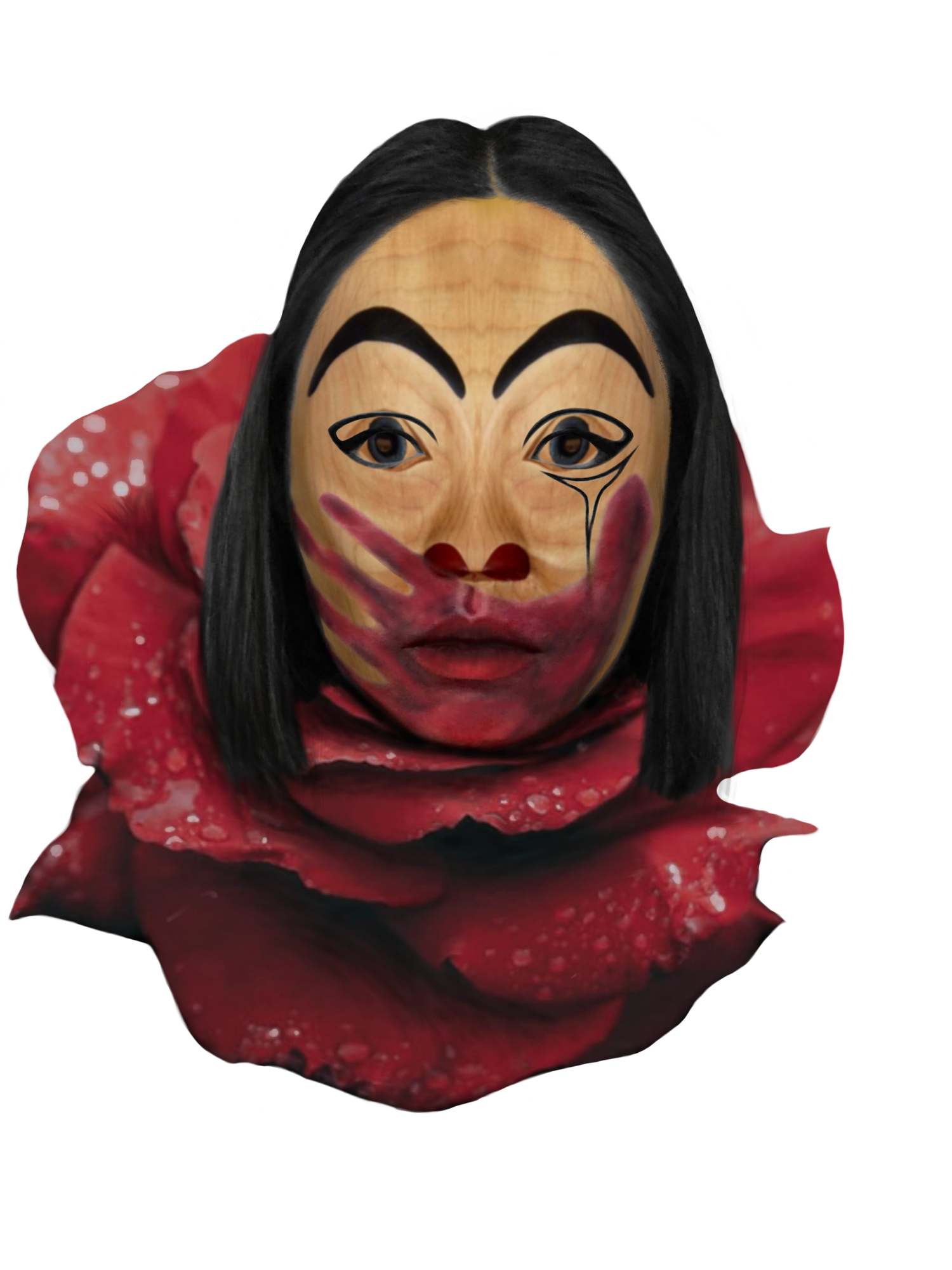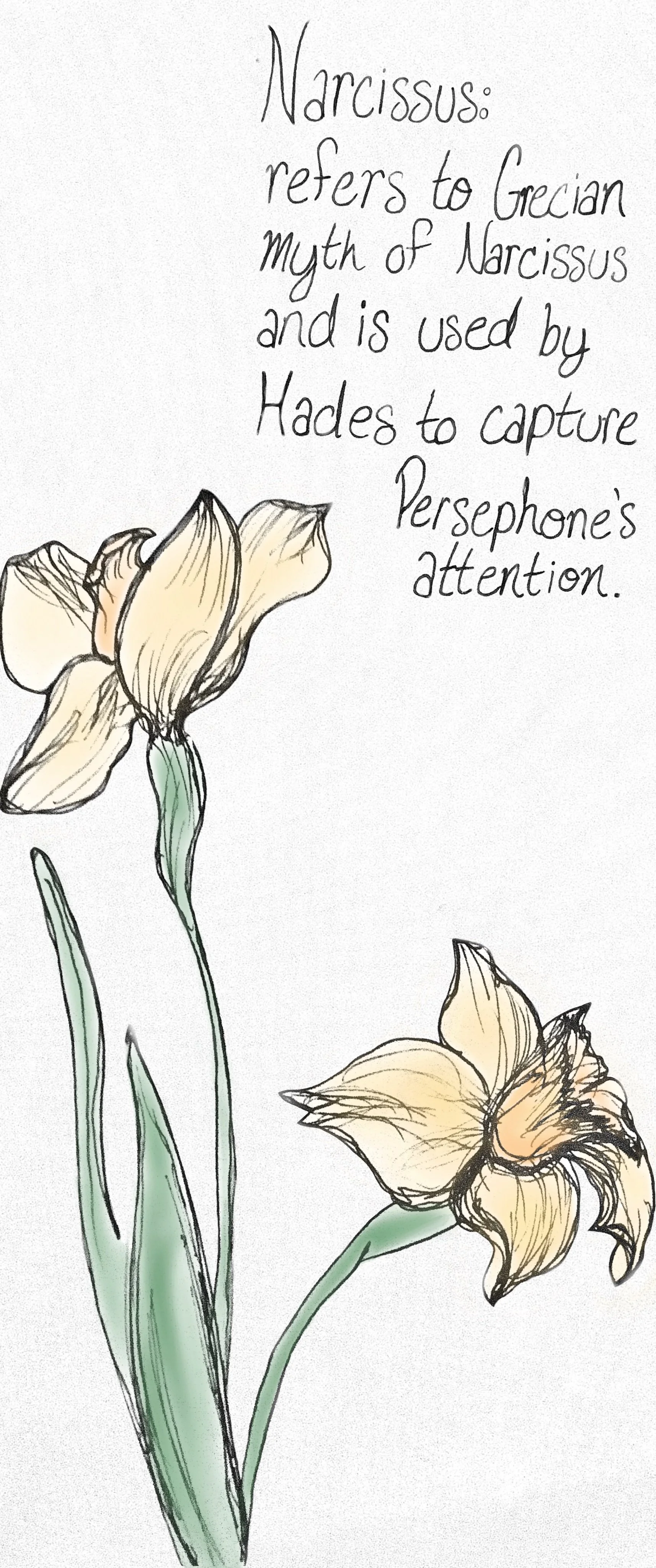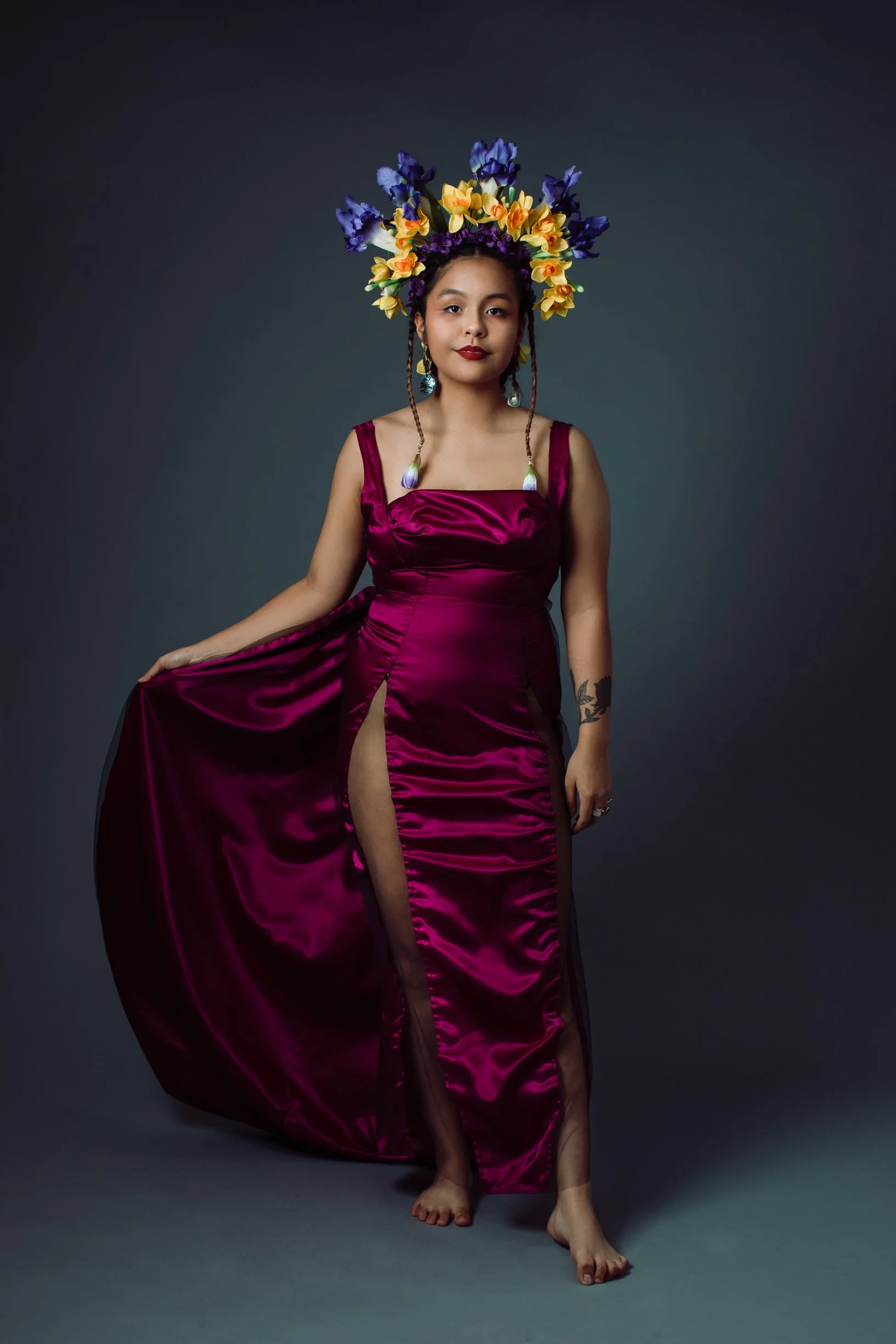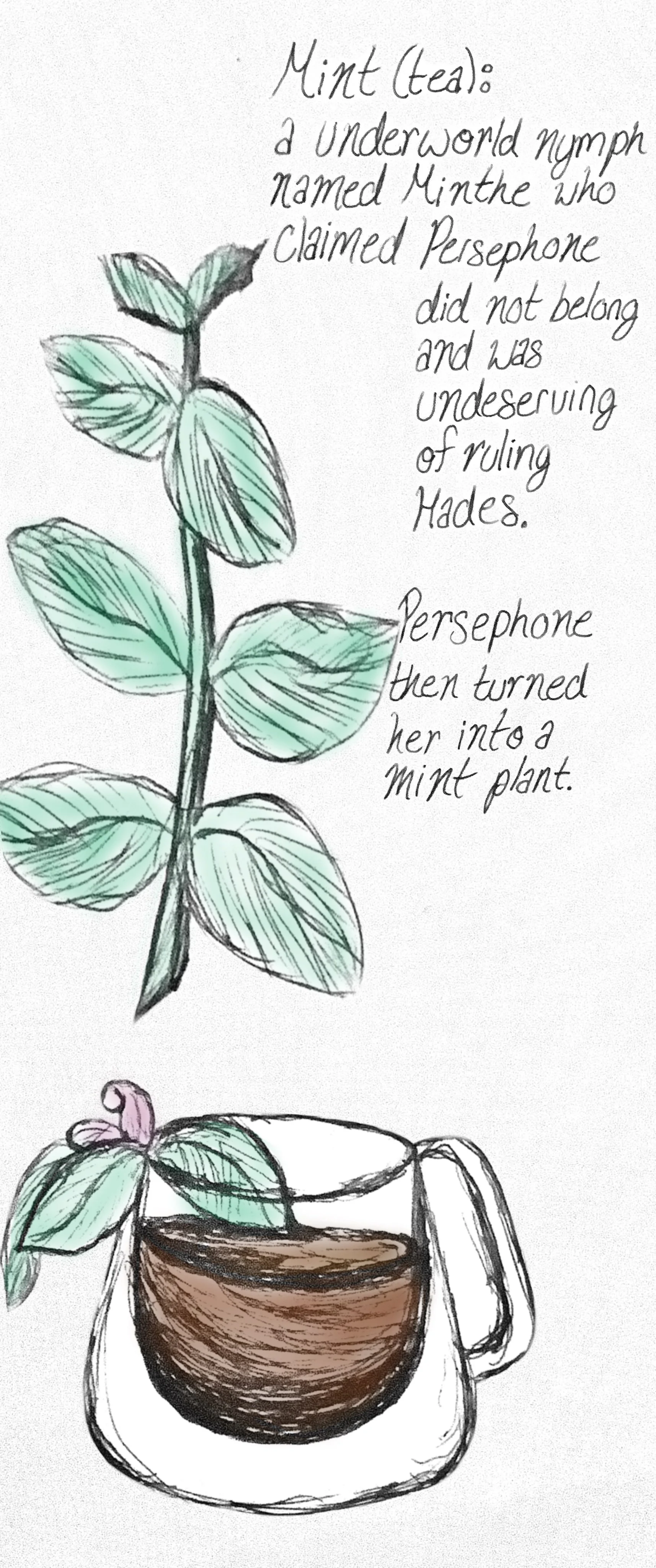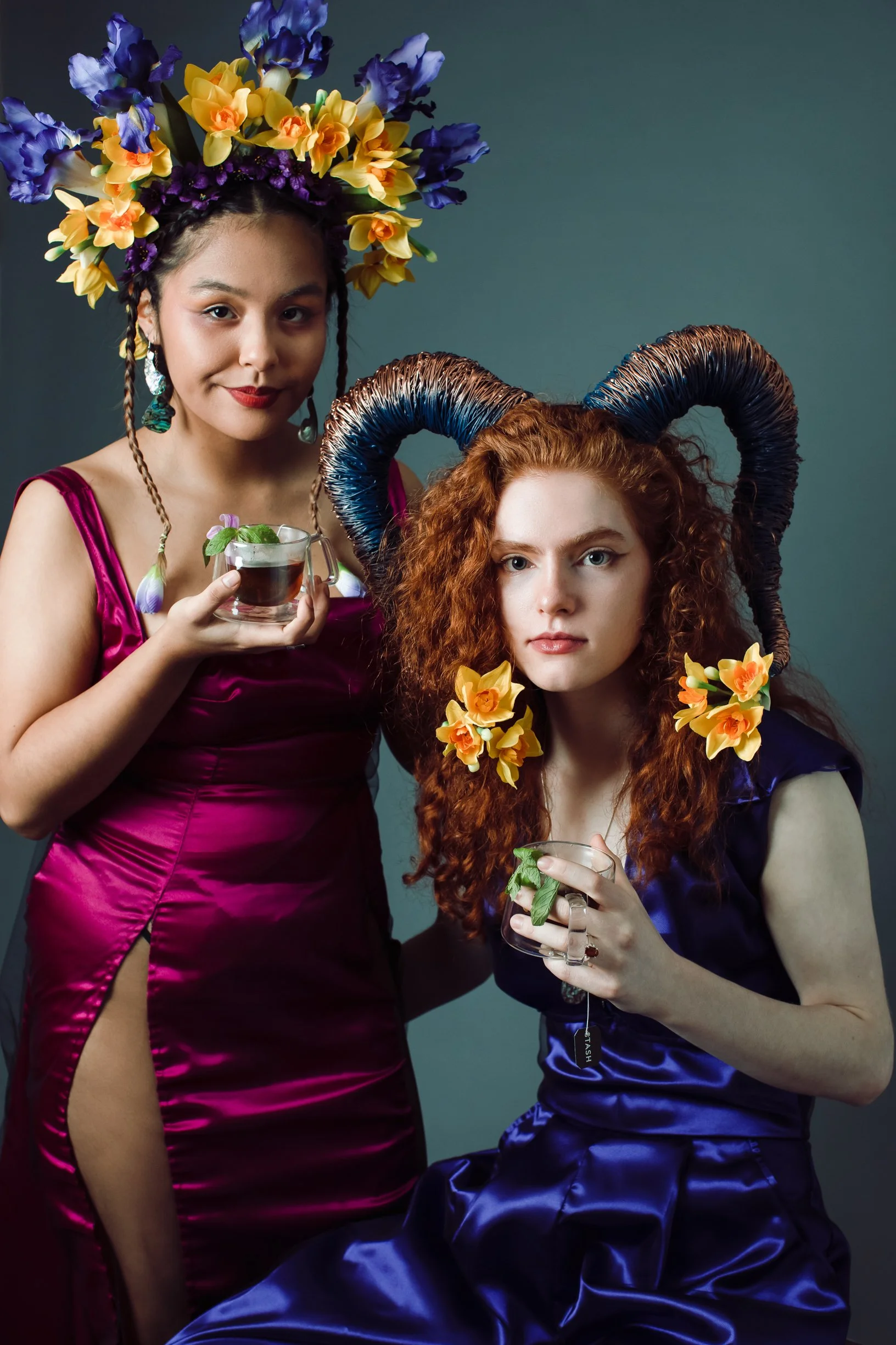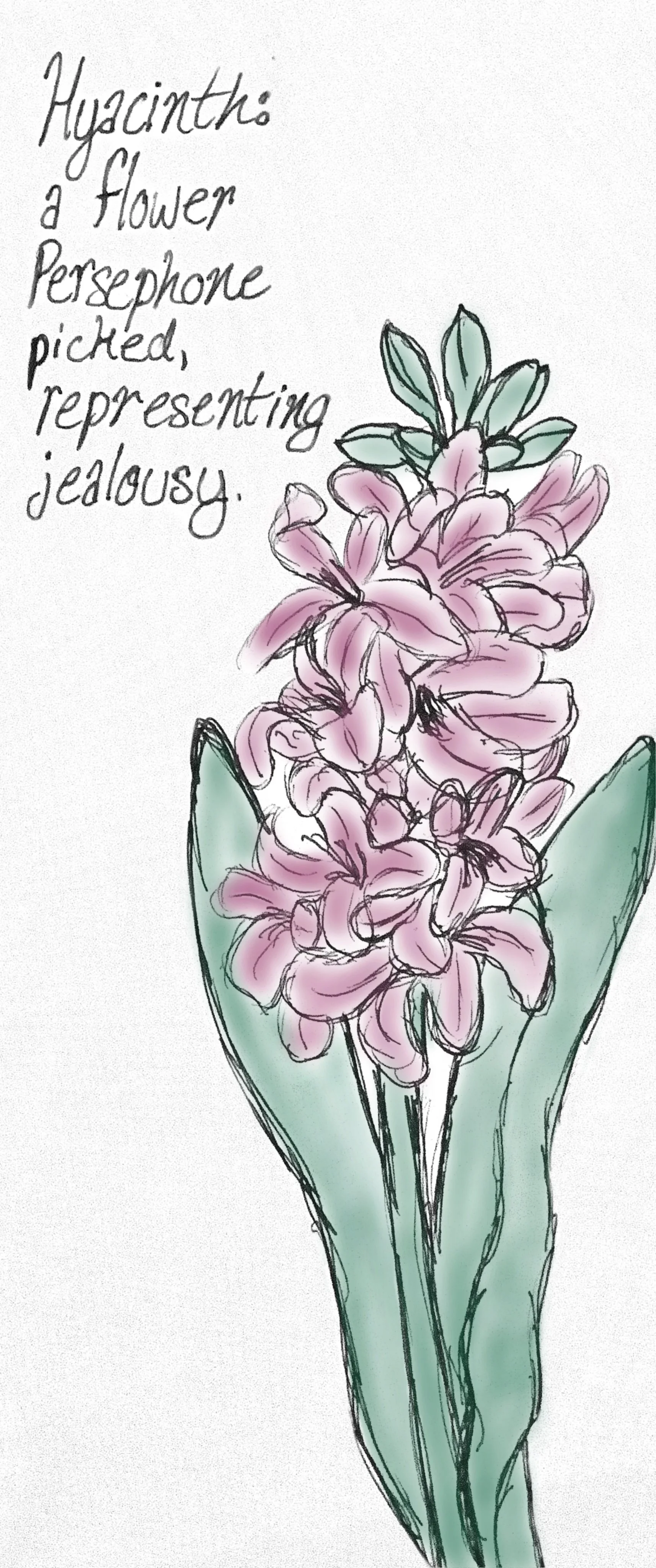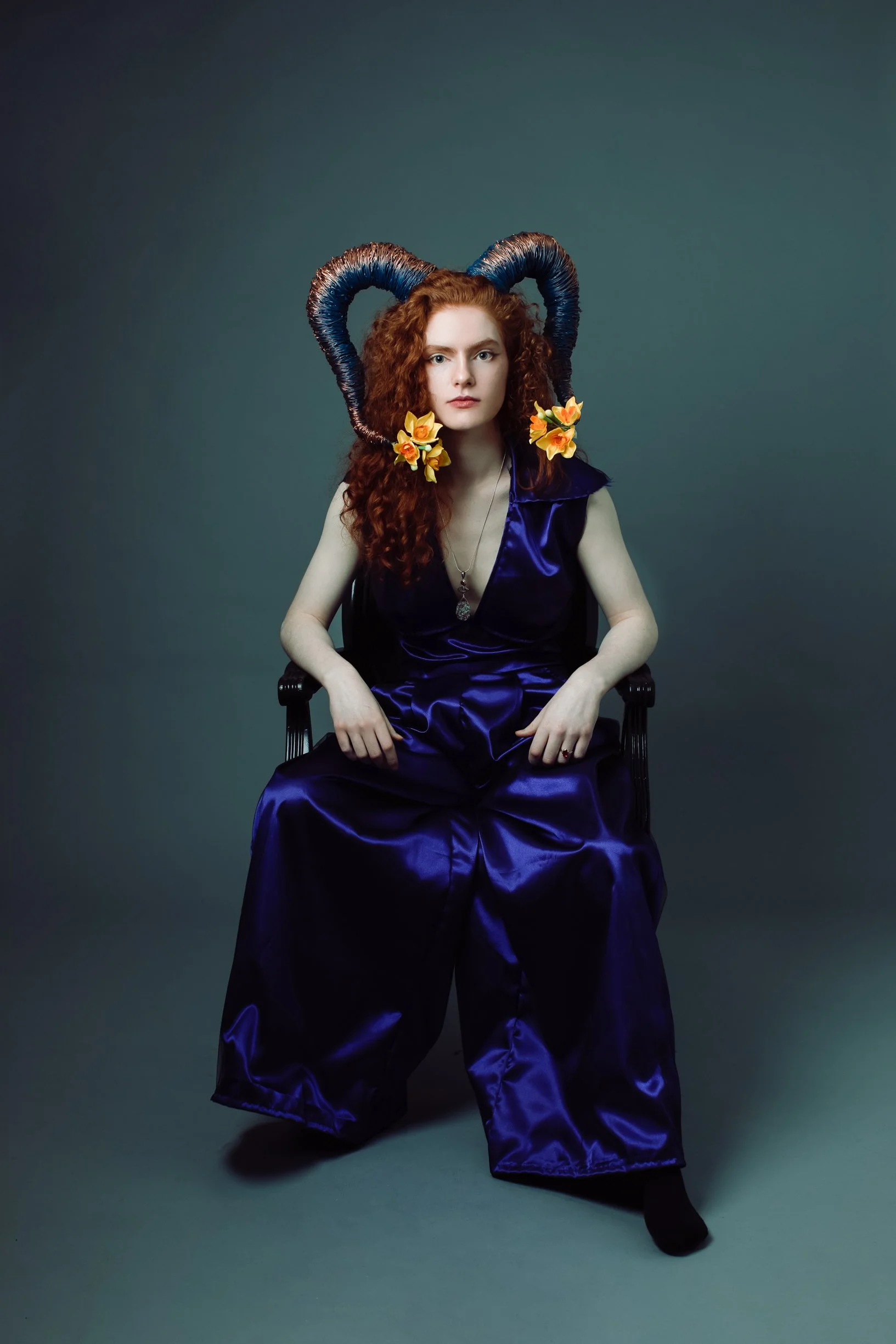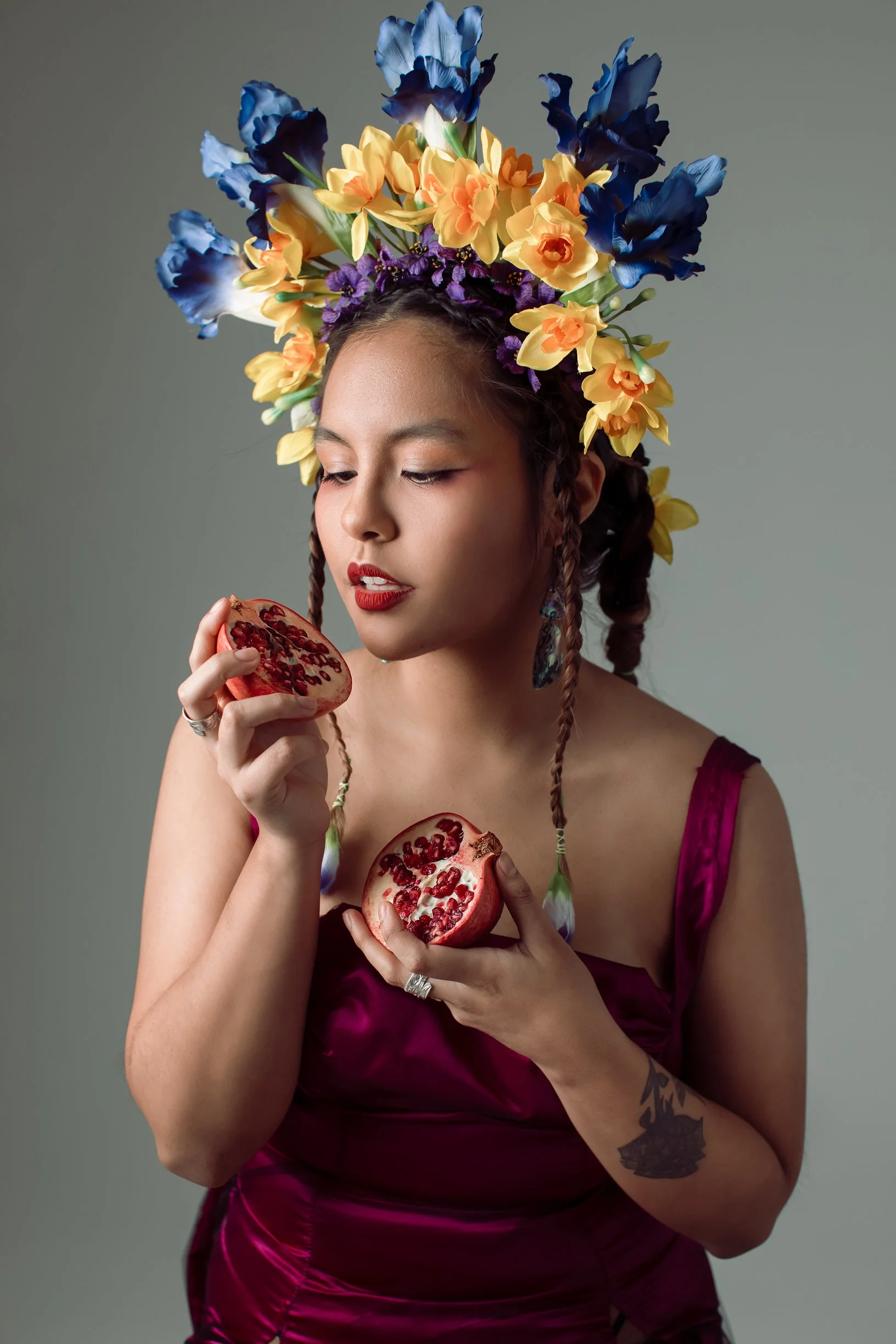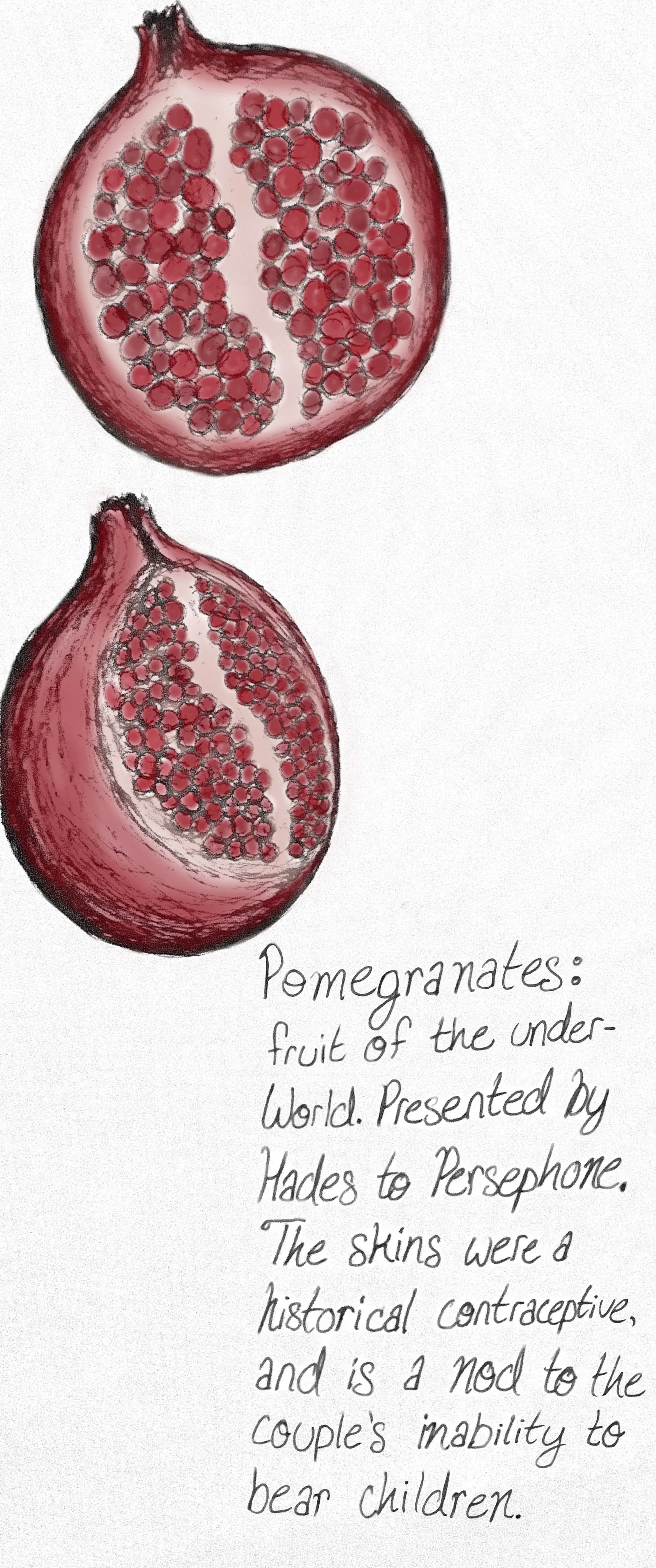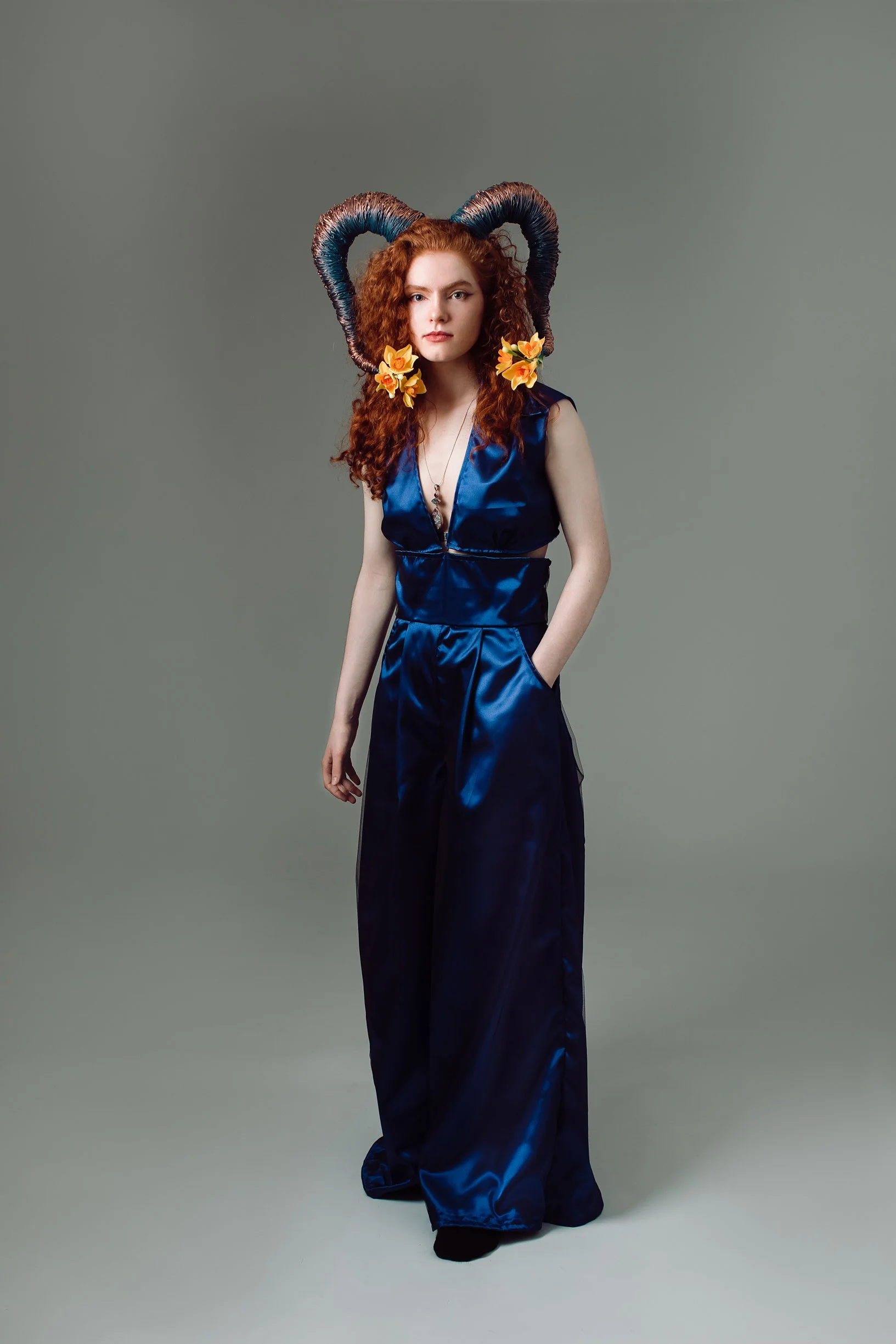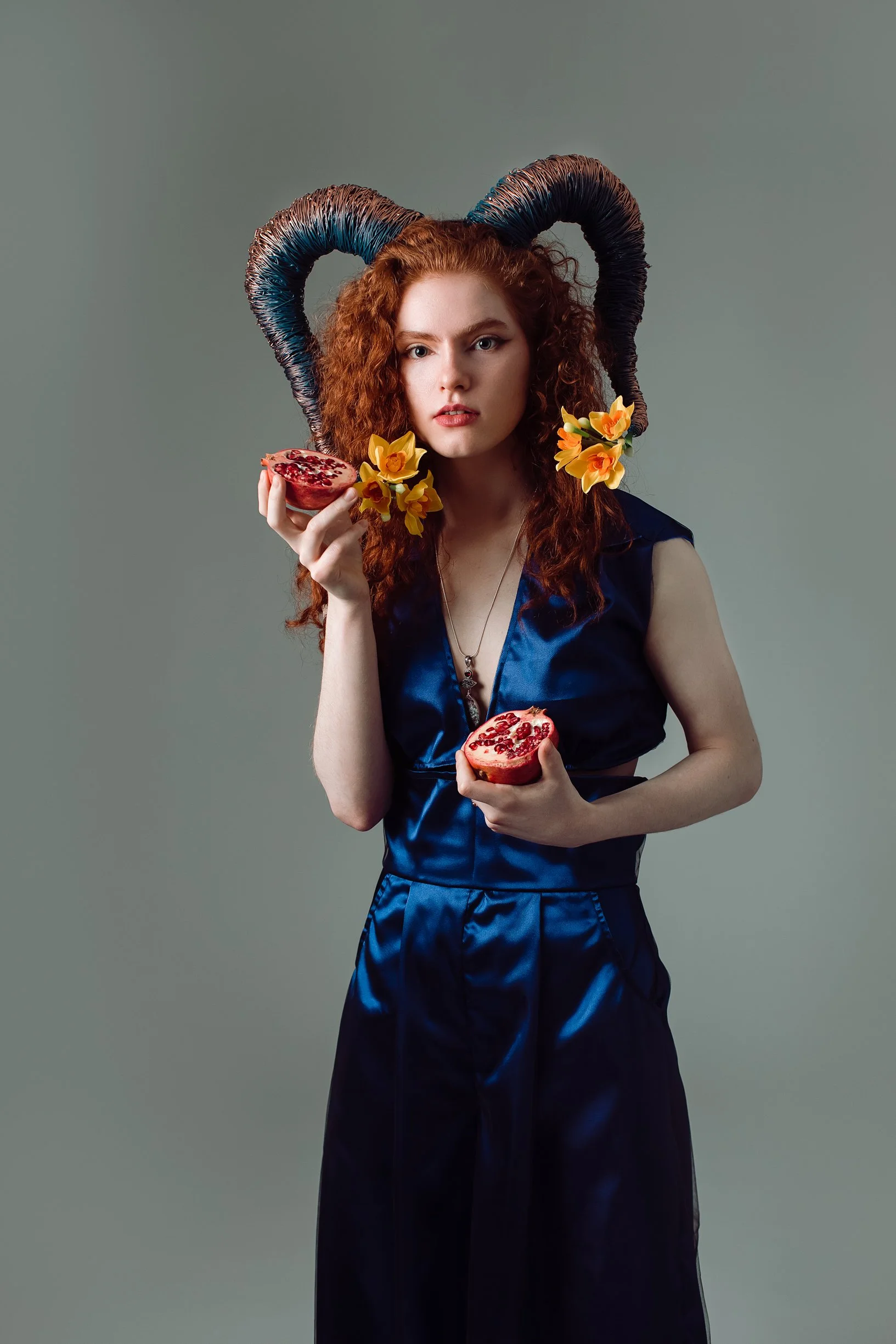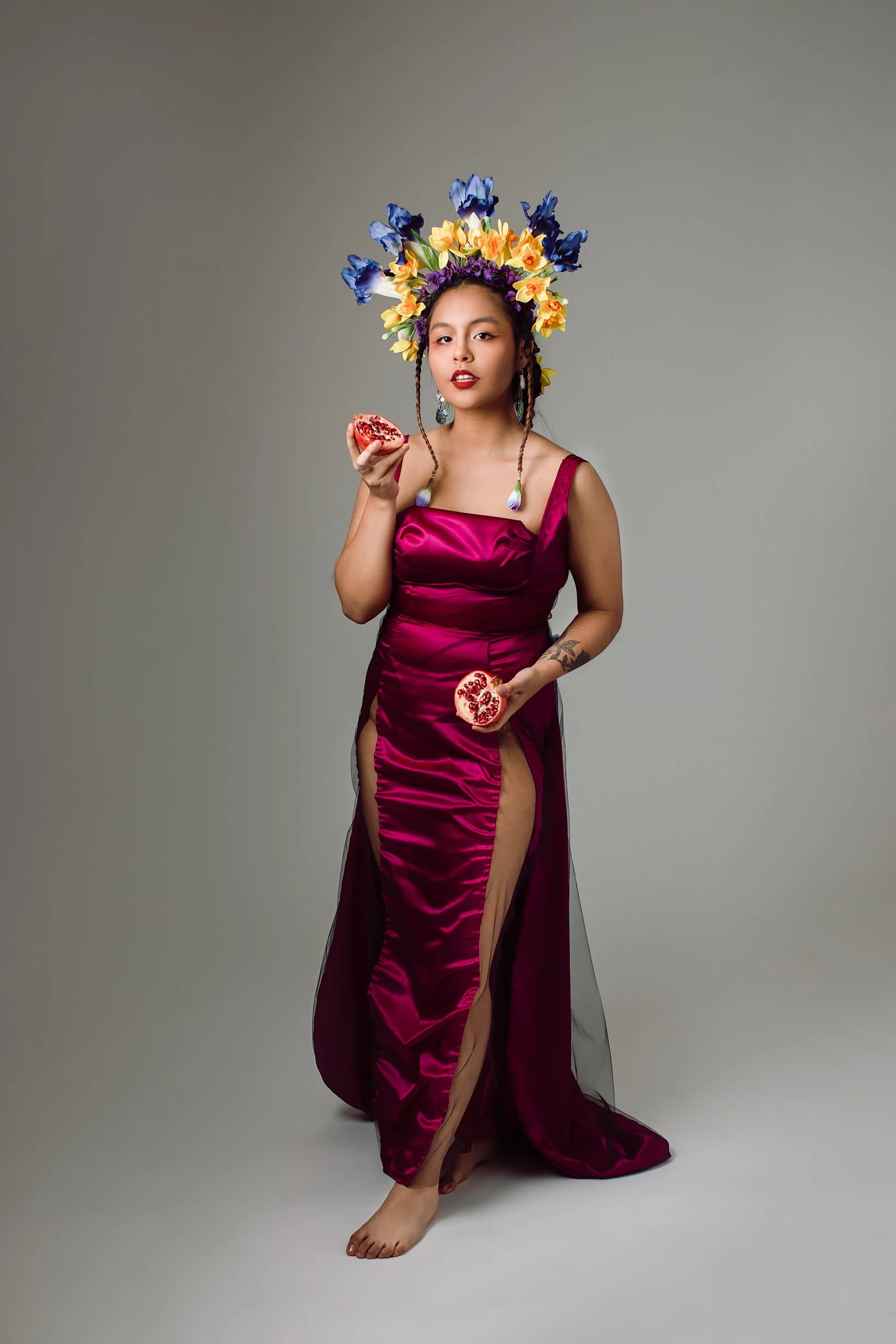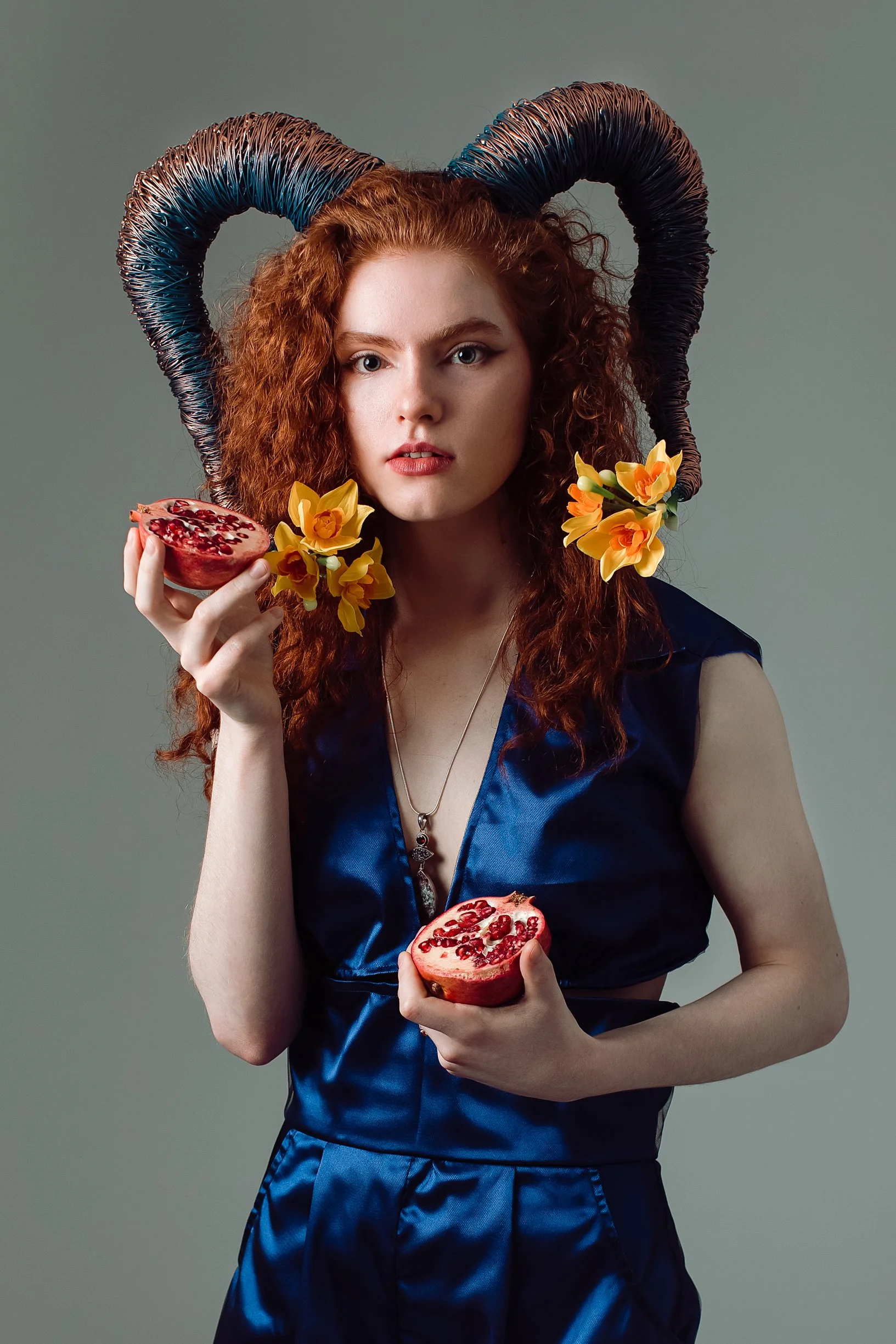An installation project with photographs of handcrafted garments, headpieces, and props. Coded flora and accessories reference elements of the myths of Persephone and Hades. Sketchbook panels present the coding to the viewer so they can “read” the images and feel like they stepped into my sketchbook. The colours reference pop culture, Lore Olympus, and the highlighting of violets, a historical reference to sapphic women gifting potential lovers violets as a subtle code, an invitation. An homage to the poet Sappho by presenting Hades as an androgynous woman, there is also a spin on pomegranates, the skin a historical contraceptive; in the case of Hades, it is a symbol of the God of death being barren, in this project, it instead is a nod to the sapphic couple’s inability to procreate.
I’ve added a sound element to make this an installation, a cover of Take Me to Church by Hozier, as a nod to the Church’s role throughout colonization; the condemning of homosexuality, other cultures, and religions to force assimilation. The act of appropriating elements of pop culture, stories and methodologies gained from academic assimilation is an intentional counter to the phenomenon of mythologization or appropriation of other cultures, by the majority, before inclusion in the scope of western art. This project retells Persephone and Hades: on a global scale, cultures are mythologized through colonization or appropriated by the majority before being included in the scope of Western Art.
Grounded down to me, this references the vanishing Indian trope- indigenous peoples were forced to assimilate, and their cultures (illegal to partake in) were stolen for museums. Despite doing so, they were still not included in contemporary spaces that settler artists such as Emily Carr were recognized in for depictions of indigenous art. Concerning this project, Persephone is a deity that predates Grecian colonization and is indigenous to Sicily; she was worshipped through Grecian colonization and then became a figure of “mythology” instead of religion as the spread of Christianity made the worship of pagan gods illegal. My connection to her is through my mom, as growing up, she taught me about astrology, which would later become a base for queer connection in adulthood. Astrology also created my interest in ancient Greek mythology, and later Persephone as she is associated with the sign Virgo, prevalent in my chart. The link to astrology goes further into indigenous origin stories of the Sky People.
I had some fun with the retelling of the myth, too, by including references to Minthe, mint tea in the photos, an underworld nymph who told Persephone she was out of place and unworthy of rule in the Underworld. Persephone turned her into a mint plant, so in this retelling, I played with her name and turned her into tea.
Persephone’s story counters the feeling of displacement as embodying duality allows her to find a connection and empowerment in two contrasting spaces- as I do, carrying my heritage in academic areas that have pushed me to assimilate in winter months while also bringing back assimilated methodologies and materials to my home in the summer.
Dress and Suit, makeup & hair: myself
Headpieces: designed myself, built by Brianna Gray
Photographer: Sarah Bowman Photography
Granite jewellery: Cassandra Gray
Silver jewellery: gift from Gigi Shirley Moore
Abalone earrings: gift from Auntie Nasya Moore
Models: myself & Brianna Gray
